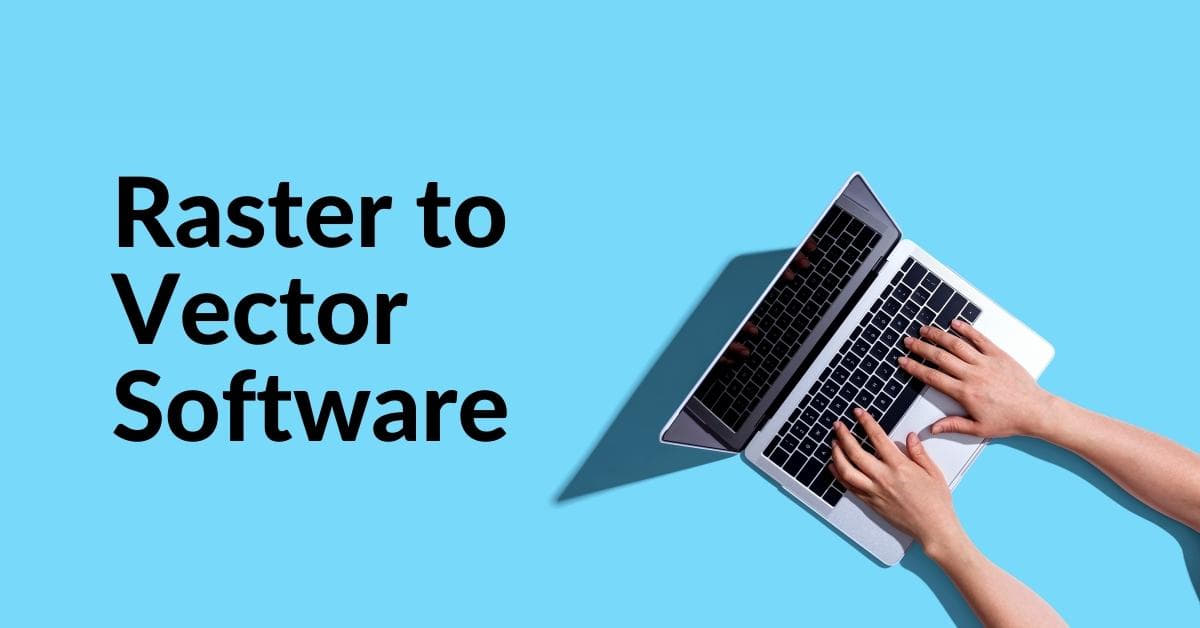In the digital age, graphics and images play a significant role in our lives. Whether you’re a graphic designer, illustrator, or a hobbyist, you’ve probably encountered the challenge of converting raster images into vector format. Raster to vector software has emerged as a powerful solution to this problem, offering a host of features and benefits for image transformation. In this comprehensive guide, we’ll explore what raster to vector software is, its significance, and the top options available in the market.
What is Raster to Vector Software?
Raster to vector software is a specialized tool that allows users to convert bitmap or raster images into vector graphics. Unlike raster images that are composed of pixels, vector graphics use mathematical equations to represent shapes and lines. This conversion process is essential for various applications, such as logo design, illustration, and printing.
Why is Raster to Vector Conversion Important?
Converting raster to vector images offers several advantages:
- Scalability: Vector images can be scaled up or down without losing quality, making them ideal for large format printing.
- Editing Flexibility: Vector graphics are easy to edit and modify, allowing you to make changes to your artwork without quality degradation.
- Smoothness: Vector graphics have clean, smooth lines and edges, providing a professional look to your designs.
- Versatility: Vector images can be used for a wide range of applications, from web design to billboards.
- Consistency: Raster to vector conversion ensures consistency in your graphics, making them suitable for branding and marketing materials.
Top Raster to Vector Software Options
a. Adobe Illustrator
Adobe Illustrator is a leading vector design software known for its powerful features and versatility. It provides a comprehensive set of tools for converting raster to vector images. Its image tracing functionality and integration with other Adobe software make it a top choice for professional designers.
b. CorelDRAW
CorelDRAW is a popular vector graphics suite that offers an intuitive interface and robust vectorization tools. It’s known for its ease of use and is suitable for both beginners and experienced designers. CorelDRAW is available for Windows and offers various vectorization options.
c. Inkscape
Inkscape is a free, open-source vector graphics editor that rivals premium software in functionality. It’s an excellent choice for those on a budget. Inkscape’s vectorization tools are user-friendly and provide quality results.
d. Vector Magic
Vector Magic is an online raster to vector conversion tool that is incredibly easy to use. It offers both automatic and manual tracing options. While there is a cost associated with Vector Magic, it’s an excellent choice for quick and hassle-free conversions.
e. AutoTrace
AutoTrace is another open-source raster to vector conversion tool. It’s a command-line program that offers high-quality vectorization. While it may not have a graphical interface like other software, it’s a powerful tool for those comfortable with command-line operations.
How to Use Raster to Vector Software
Here’s a general overview of the steps involved in using raster to vector software:
a. Preparing Your Raster Image: Begin by selecting a high-resolution raster image and clean it up if necessary.
b. Importing and Tracing: Import the raster image into the software and use the tracing tools to convert it into vector format.
c. Refining and Editing: After conversion, refine and edit the vector image as needed, adjusting colors, shapes, and details.
d. Exporting Your Vector Image: Finally, export the vector image in your desired file format.
FAQs
a. What is the difference between raster and vector images?
Raster images are made up of pixels and are resolution-dependent. Vector images are composed of mathematical equations and are resolution-independent. Raster images are best for photographs, while vector images are ideal for logos, icons, and illustrations.
b. Why should I use raster to vector software?
Raster to vector conversion ensures that your graphics can be scaled and edited without loss of quality. This is especially crucial for professional design work and printing.
c. Can I use free software for raster to vector conversion?
Yes, there are free software options like Inkscape and AutoTrace that offer raster to vector conversion capabilities. They are excellent choices for budget-conscious users.
d. Is raster to vector software suitable for logo design?
Yes, raster to vector software is commonly used for logo design, as it allows for a clean and scalable version of your logo.
e. What are the system requirements for these software options?
System requirements vary from one software to another. Always check the official website or documentation of the software you choose for the specific requirements.
Conclusion
Raster to vector software is a valuable tool for anyone working with graphics and images. It opens up a world of possibilities, from seamless scaling and editing to creating professional-looking designs. With a variety of software options available, from premium to free, you can find the perfect fit for your needs. Take the time to explore these options, and soon, you’ll be converting raster images into stunning vectors with ease.
This page was last edited on 22 February 2024, at 4:42 pm
